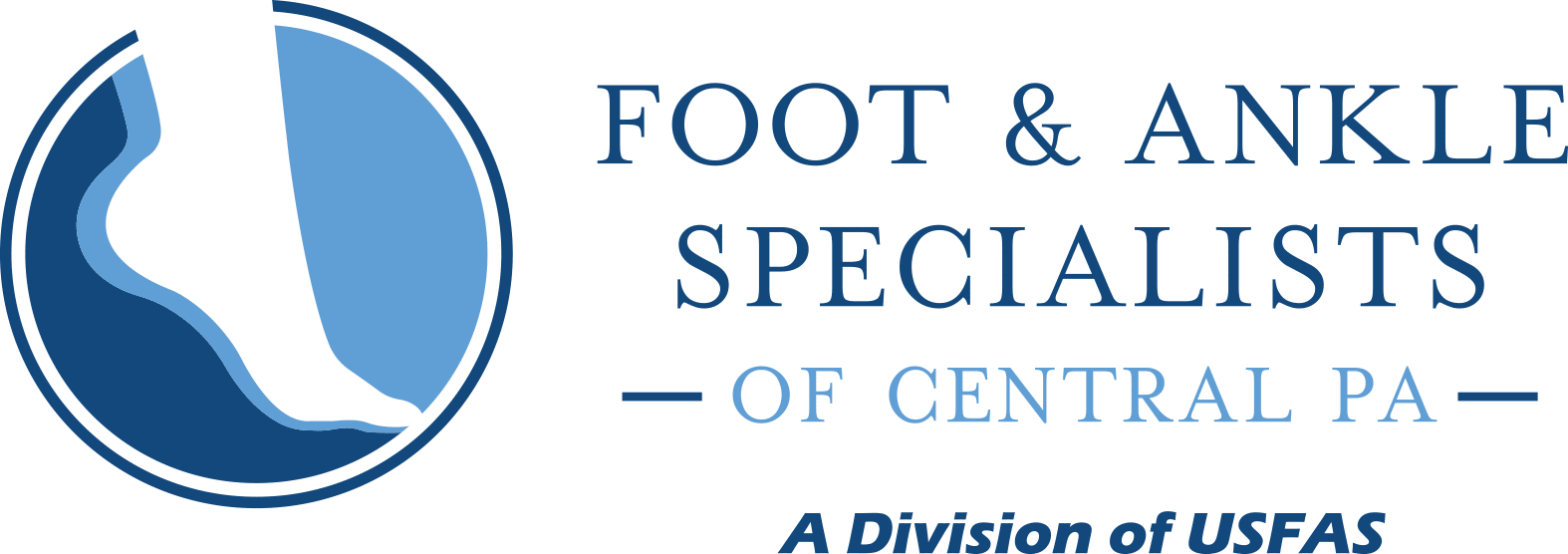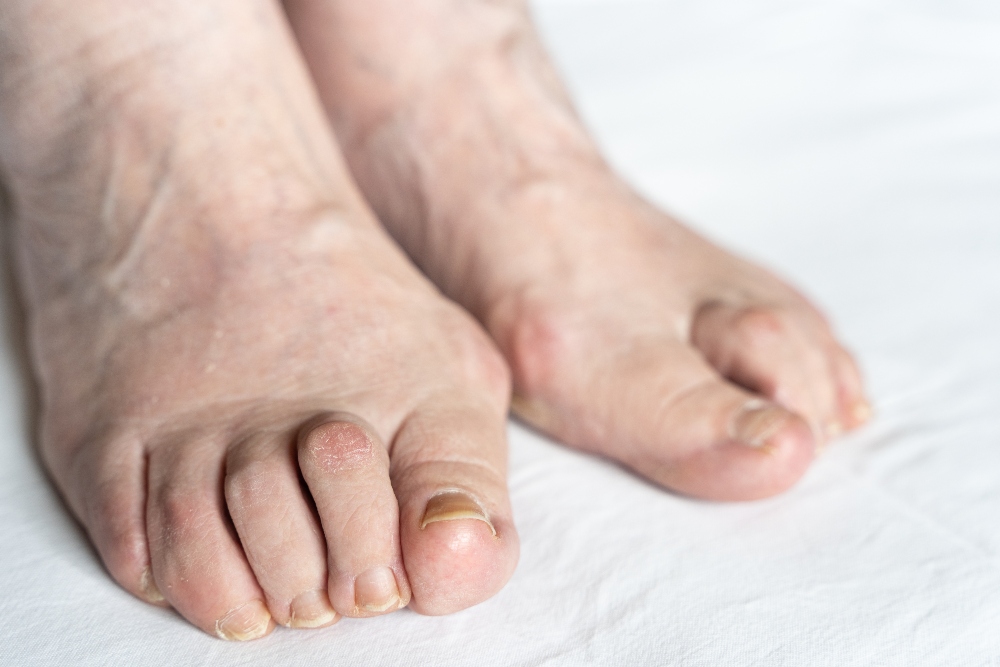Toe Deformities
Toe deformities are abnormalities that affect the structure, position, or function of the toes. They can arise from various factors such as genetics, wearing ill-fitting shoes, or injuries. There are several types of toe deformities, including bunions, hammertoes, claw toes, and mallet toes. They each cause varying degrees of pain, discomfort, and mobility issues.
These deformities often impact the joints, bones, and soft tissues within the toes, leading to discomfort or pain. In some cases, toe deformities can also disrupt balance and walking, requiring medical intervention for proper management and treatment.
How Do Toe Deformities Develop?
Toe deformities can develop due to a variety of factors. The formation of these deformities typically involves changes in the bones, joints, and soft tissues of the toes, which can disrupt their normal alignment and function. Here are some of the leading causes and processes that contribute to the development of toe deformities:
- Genetics: Genetic predisposition can play a significant role in the development of toe deformities. Certain foot structures, like flat feet or high arches, can be inherited, increasing the risk of developing deformities.
- Muscle imbalances: Imbalances in the muscles responsible for toe movement can lead to deformities. If some muscles become stronger or weaker than others, this can cause the toes to be pulled out of their normal position, resulting in abnormal alignment.
- Ill-fitting footwear: Wearing shoes that are too tight, narrow, or have high heels can force the toes into unnatural positions over time. Prolonged pressure on the toes can lead to the development of deformities such as bunions, hammertoes, and claw toes.
- Trauma or injury: Injuries to the toes or feet can cause damage to the bones, joints, or soft tissues, leading to deformities. Fractures, dislocations, and sprains can all contribute to the development of abnormal toe structures.
- Arthritis: Inflammatory conditions like arthritis can cause damage to the joints in the toes, leading to deformities. Osteoarthritis, rheumatoid arthritis, and gout are common forms of arthritis. These can affect the feet and contribute to the development of toe deformities.
- Neuromuscular conditions: Certain neuromuscular disorders, such as Charcot-Marie-Tooth disease, can cause muscle weakness and imbalances in the foot, leading to the development of deformities.
- Aging: As people age, the soft tissues in the feet can lose elasticity, and the joints can become stiffer, increasing the risk of developing toe deformities.
The formation of toe deformities is typically gradual, with symptoms and complications worsening over time if left untreated. Early intervention and proper foot care can help prevent or manage these deformities and minimize associated discomfort or pain.
What are the Symptoms Associated With Them?
Toe deformities can cause a range of issues that can impact your comfort and quality of life. In general, the symptoms associated with these deformities can vary. Still, here are some common signs to look out for:
- Pain and discomfort: One of the most common symptoms is pain or discomfort in the affected toe(s), especially when walking, standing, or wearing shoes.
- Swelling and inflammation: Deformed toes may exhibit swelling, redness, or warmth in the affected area, which could indicate inflammation.
- Corns and calluses: Due to abnormal pressure and friction, corns and calluses may develop on the affected toe(s) or between the toes.
- Restricted mobility: Individuals with toe deformities may experience difficulty moving the affected toe(s), which can limit overall foot function.
- Changes in appearance: The affected toe(s) may appear bent, twisted, or out of alignment compared to the other toes, which can be an obvious visual indication of a deformity.
- Difficulty wearing shoes: If you have a toe deformity, you may struggle to find comfortable footwear. You may notice that your shoes press against the deformed toe(s) and exacerbate the pain or discomfort.
- Balance and walking issues: Toe deformities can affect your ability to walk or maintain balance. An imbalance can lead to a higher risk of falls and injury.
- Skin irritation or ulceration: Deformed toes can cause skin irritation or breakdown, which can lead to the formation of ulcers or sores. This can be especially dangerous if you have diabetes, as ulcers can be slow to heal and may become infected.

How Long Do Toe Deformities Last?
Toe deformities can vary in duration. Mild cases may resolve on their own or with conservative treatments. Severe or chronic deformities may be permanent without surgical intervention. Individual factors, such as cause and severity, will affect the duration of a toe deformity.
Are Toe Deformities Serious?
Mild toe deformities might cause slight discomfort or aesthetic concerns but typically do not impact daily activities. However, if you have more severe deformities, you will experience pain, swelling, or stiffness, which can make it difficult to wear shoes and walk comfortably. In extreme cases, untreated deformities may result in joint damage, limited mobility, or deformities in other parts of the foot.
If you leave your toe deformity untreated, you may also experience infections if the skin breaks down due to pressure or friction. In this case, a toe deformity can be quite serious, as infections can have severe consequences.
The seriousness of a toe deformity also depends on the underlying cause, such as arthritis, trauma, or genetic factors. Different causes may lead to unique challenges and complications, influencing the overall seriousness of the deformity.
How Do You Treat Them?
If you are dealing with a toe deformity, we understand how uncomfortable and frustrating it can be. But there are several ways to treat toe deformities, depending on the severity and type of the condition. Here are some possible treatment options to consider:
Non-Surgical Treatments
If your toe deformity is mild, non-surgical treatments may be the best option. These treatments can include wearing comfortable shoes with a wide toe box to reduce pressure on the affected toe(s) or using orthotics to support the foot and improve alignment. You may also need to perform exercises to improve toe mobility and flexibility.
Surgery and Physical Therapy
Surgery may be the best option if your toe deformity is severe and causing significant pain or mobility issues. The type of surgery will depend on your specific toe deformity and may involve releasing or realigning the affected tendons, ligaments, or bones. Following surgery, you may go for physical therapy to help you regain strength and flexibility in your toes.
Do They Always Require Surgery?
Milder forms of toe deformities, such as hammertoes or mallet toes, are easier to manage with non-surgical treatments. For instance, you can wear shoes with a roomier toe box or use padding to relieve pressure. However, if these conservative treatments do not alleviate symptoms, we may consider surgery.
More severe forms of toe deformities, such as claw toes or crossover toes, on the other hand, may require surgery to correct. In these cases, surgery will realign the bones, tendons, and ligaments to relieve pain and restore function.
It is important to note that surgery is not always the first line of treatment for toe deformities, and we always advise our patients to explore conservative measures first.
When is It Time to Schedule an Appointment?
Toe deformities can be both uncomfortable and cause difficulties in your daily life. If you are experiencing persistent toe or foot pain, noticing changes in your toes like bending, overlapping, or curling, or having trouble walking or wearing shoes, it is time to take action.
Early intervention can prevent complications and discomfort while ensuring proper treatment. So if you have a toe deformity, do not wait for treatment. Instead, contact our office to schedule an appointment with us and get on the path to pain-free mobility and improved foot health.

